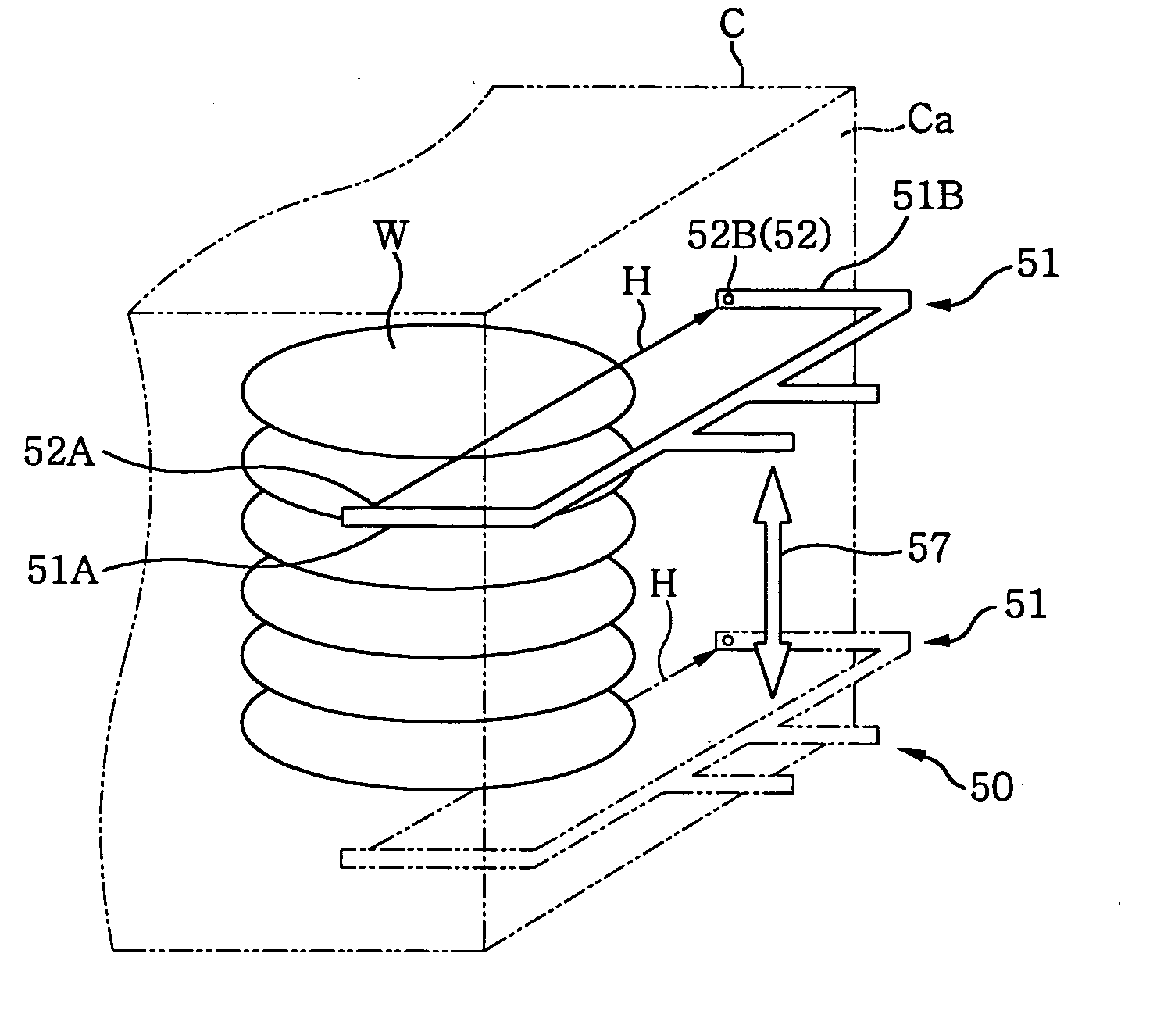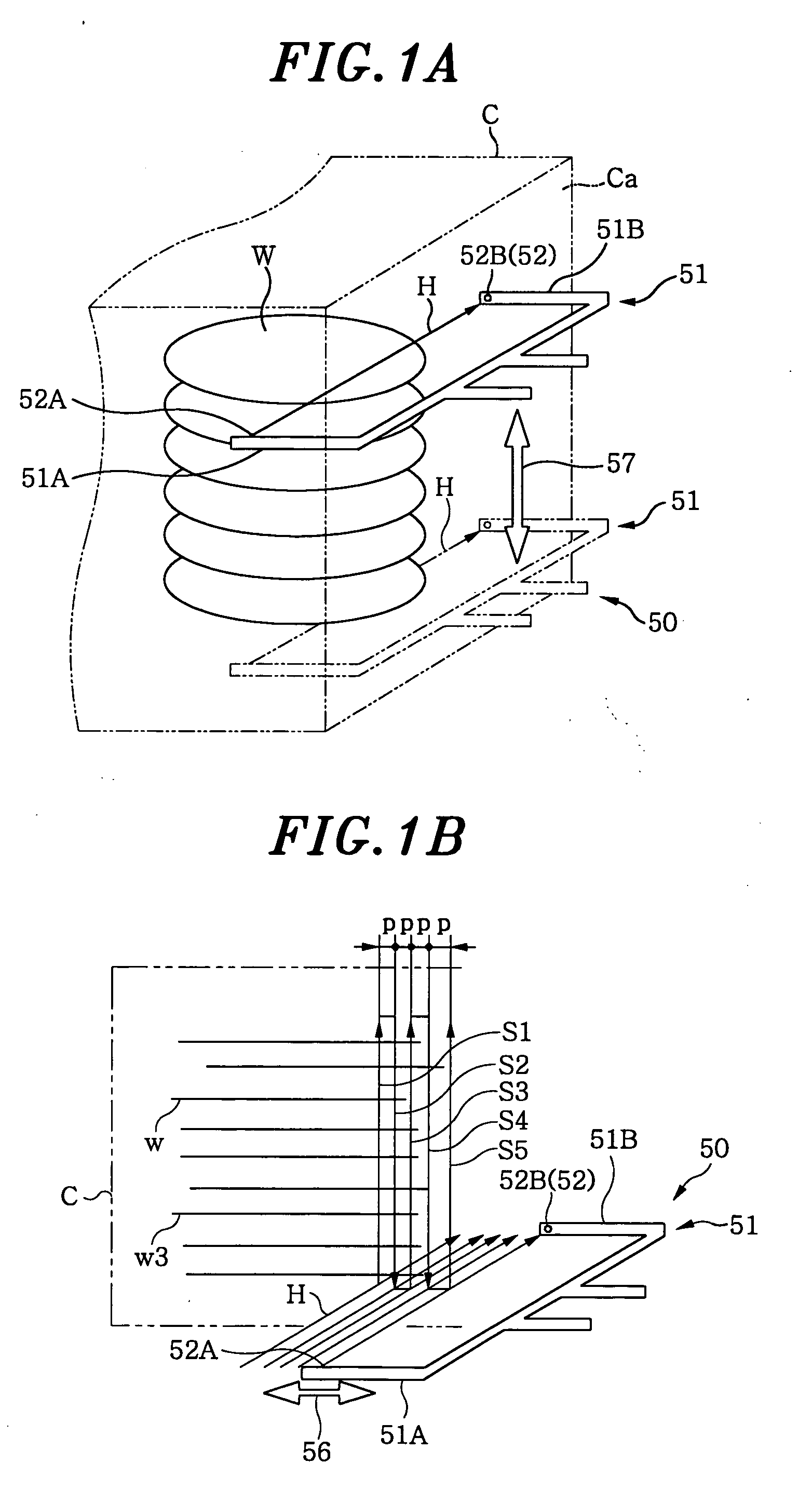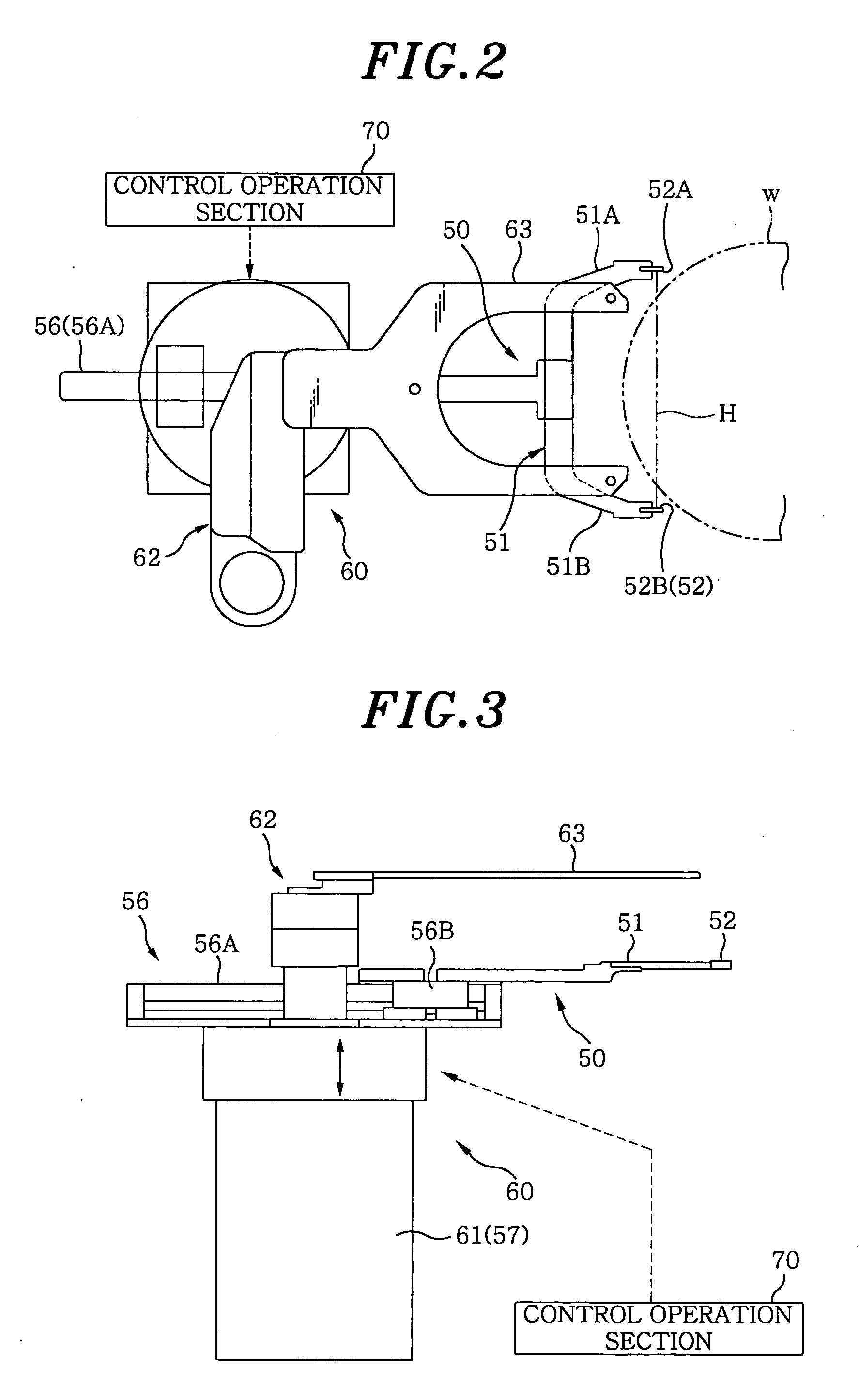Semiconductor processing-purpose substrate detecting method and device, and substrate transfer system
a technology of substrate transfer and semiconductors, applied in the direction of material analysis, transportation and packaging, instruments, etc., can solve the problems of difficult to pick up the substrate, inability to determine the position of the substrate with high accuracy, and inability to detect the exact position of the substrate in forward/backward direction, so as to reduce the time for detection and reduce the misalignment
- Summary
- Abstract
- Description
- Claims
- Application Information
AI Technical Summary
Benefits of technology
Problems solved by technology
Method used
Image
Examples
first embodiment
[0036] (First Embodiment)
[0037]FIGS. 1A and 1B are of a perspective view and a partial vertical sectional perspective view showing main parts of a substrate detecting device in accordance with a first embodiment of the present invention, respectively. FIG. 2 is a plane view schematically showing a transfer robot for mounting thereon the substrate detecting device in accordance with the first embodiment. FIG. 3 is a side view schematically showing the transfer robot mounting thereon the substrate detecting device described in FIG. 2.
[0038] As shown in FIGS. 2 and 3, a substrate detecting device 50 in accordance with the first embodiment includes a sensor support body 51 mounted on a transfer robot 60. The sensor support body 51 has a pair of arms 51A and 51B separate from and facing each other in a horizontal plane.
[0039] As shown schematically in FIG. 1A, multiple substrates W are accommodated in a cassette C while each being disposed horizontally and having a gap therebetween in ...
second embodiment
[0057] (Second Embodiment)
[0058]FIGS. 4A and 4B are of a perspective view and a partial vertical sectional perspective view showing main parts of a substrate detecting device in accordance with a second embodiment of the present invention, respectively. Further, the substrate detecting device in accordance with the second embodiment is the same as that in the first embodiment, except that a program organization of the control operation section and parts shown in FIGS. 4A and 4B are configured to be different. Namely, the sensor support body 51, the driving sections 56 and 57 thereof, and the transfer robot 60 described in FIGS. 2 and 3 are adopted in the second embodiment as well.
[0059] A substrate detecting device 50B in accordance with the second embodiment includes at least three sets of optical sensors 52 each made up of a light emitting unit 52A and a light receiving unit 52B. Specifically, in the substrate detecting device 50B, five sets of the light emitting units 52A and th...
third embodiment
[0062] (Third Embodiment)
[0063] FIGS. 55A and 5B are of a perspective view and a partial vertical sectional perspective view showing main parts of a substrate detecting device in accordance with a third embodiment of the present invention, respectively. Further, the substrate detecting device in accordance with the third embodiment is the same as that in the first embodiment, except that a program organization of the control operation section and parts shown in FIGS. 5A and 5B are configured to be different. Namely, the sensor support body 51, the driving sections 56 and 57 thereof, and the transfer robot 60 described in FIGS. 2 and 3 are adopted in the third embodiment as well.
[0064] A substrate detecting device 50C in accordance with the third embodiment includes F / L (L is an integer) sets of optical sensors 52 each made up of a light emitting unit 52A and a light receiving unit 52B, for the number of expected total scans F. Specifically, in the substrate detecting device 50C, th...
PUM
 Login to View More
Login to View More Abstract
Description
Claims
Application Information
 Login to View More
Login to View More - R&D
- Intellectual Property
- Life Sciences
- Materials
- Tech Scout
- Unparalleled Data Quality
- Higher Quality Content
- 60% Fewer Hallucinations
Browse by: Latest US Patents, China's latest patents, Technical Efficacy Thesaurus, Application Domain, Technology Topic, Popular Technical Reports.
© 2025 PatSnap. All rights reserved.Legal|Privacy policy|Modern Slavery Act Transparency Statement|Sitemap|About US| Contact US: help@patsnap.com



